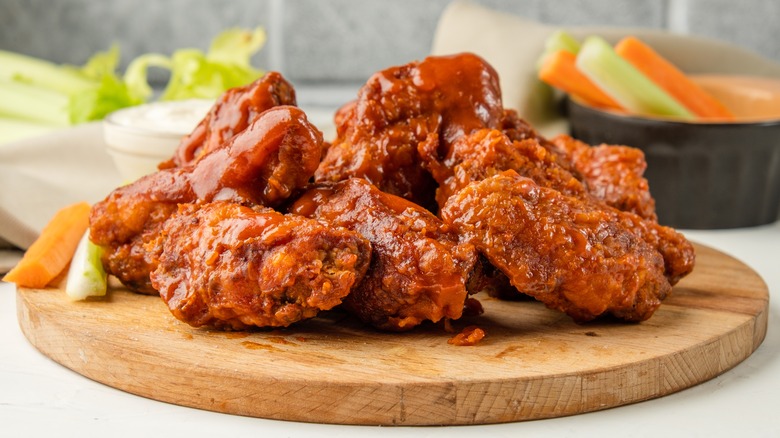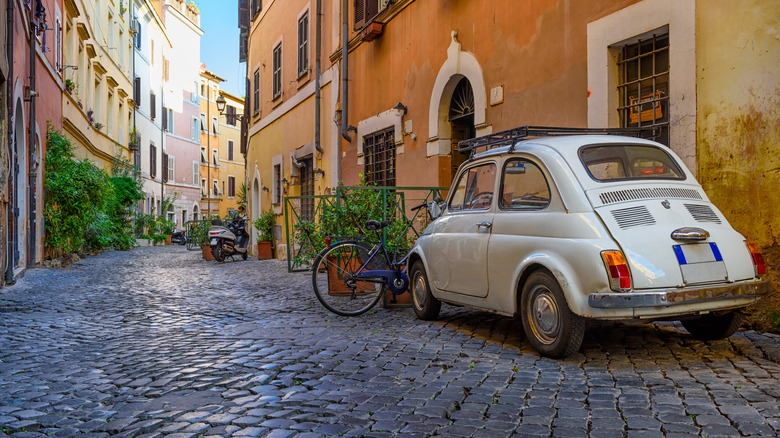How Ancient Rome Fried Chicken Before Anyone Else
The ancient Roman Empire, which ruled from 27 B.C. to A.D. 476 (per Britannica), was responsible for many firsts. It created the best roads the world had seen at the time, and it perfected aqueducts, sewage systems, and architecture. The Empire also had a solid grasp on food. According to English Heritage, the Romans introduced many foods upon their arrival to Britain. They brought more than 50 types of plants including plum, cherry, olive, and apples as well as nuts and seeds such as walnut and sesame. They also integrated spices such as coriander and dill into British culture, which the Britons then started growing on their own.
Per World History Encyclopedia, an ancient Roman diet consisted of cereal, wine, olive oil, and vegetables as well as meat, cheese, eggs, and fruit, though they were a bit more expensive. Much of their protein was made up of rabbit, deer, geese, ducks, and other animals that were widely accessible. Along with changes in food consumption, Romans also discovered new ways to preserve and cook. For example, they learned how to store ingredients in honey for longevity, and they weren't so shabby at frying chicken.
Historians learned about the chicken from ancient texts
Ancient Roman Chef Marcus Gavius Apicius hosted frequent dinner parties between AD 14 and 37, per World History. His ancient Roman cookbook "De Re Coquinaria," translated to "Art of Cooking," provided historians with key information regarding cooking in the ancient Roman era. According to Food Timeline, in his texts, a recipe was discovered for Pullum Frontonianum (Chicken a la Fronto) that detailed the methods for frying chicken. The ingredients included one fresh chicken, 100ml of oil, 200ml of liquamen (fish sauce), one branch of leek, fresh dill, coriander, pepper, and saturei (a savory herb), and a sprinkle of Defritum (a fruity syrup).
Once the ingredients were collected, Romans would begin frying the chicken while seasoning it with liquamen and oil, then add saturei, coriander, dill, and leek. Then, the dish would cook in the oven for an hour. Before plating the chicken, the dish should be "moistened with defritum," and the chicken should be topped with sprinkles of pepper. The result? A blogger on Yumblog described it as "delicious, moist, lightly herby and full of flavor."

